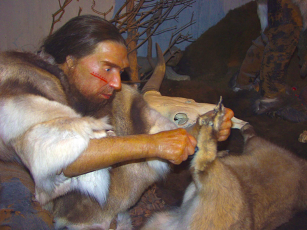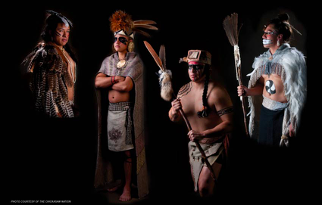3.1: Laws History
- Page ID
- 77236
You may have provided little, if any thought as to the origins of law. Just as sure as God made little green apples, the law did not fall from a tree. The law is man-made (Gender Neutral) and is assumed universally applied within society. The law is as obscure as man himself. You have probably been introduced to terms such as folkways and mores which are less sophisticated terms for policies and laws. Where do our laws come from? Why are there more than one type of law? How does law(s) impact us as a society? Do courts influence public policy through judicial decision or interpretation of laws? Do these many laws intersect or interact with each other in the criminal justice system? How does ethics and the law interact? How ought the law be enforced? All interesting questions that hopefully will be answered by the conclusion of this section.
Researchers have shown that in the beginning man (generic description meaning both genders) was pretty much in groups. However, the hierarchy of dominance was generally through the strongest male, usually referring to superiority through physical force. Thereby we hear the term the strongest shall survive was thought to be the law of the land. The Oxford English Dictionary defines "The law of the jungle is an expression that means every man for himself, anything goes, survival of the strongest, survival of the fittest, kill or be killed, dog eat dog, and eat or be eaten". The Law of the Jungle as "the code of survival in jungle life, now usually with reference to the superiority of brute force or self-interest in the struggle for survival."

Instinctively that which was necessary to survive (individual survival) was first and foremost on the mind of man and probably did not require a great deal of ethical foundation. Not until periods in history that illustrate tribes and clans were relevant to survival and society then, focused on folkways and mores as the rules of the day. The grouping of early man were generally for sake of survival in numbers, safety against attacks of other clans, and for hunting purposes. Soon man began to form by clan and tribe creating societies, which became self-evident early on that some form of law was required to regulate these societies.

Initially man was nomadic, following his food and the need to flee uninhabitable lands. Then how did they convey these folkways and mores from generation to generation. They did not have the luxury of confining these rules to easily transferable stone tablet containing the Ten Commandments as preferred in the story of Moses. They could not take the etchings from the walls of the caves where they recorded history when they traveled from location to location, then how were these policies and rules passed on? Folkways were traditionally practiced behaviors and mores were offenses against the social norms that may become laws. Prior to the written word these practices were conveyed through fables, stories or parables in addition to common practice. Ethical awareness was observed in clan and tribal societies, although not specifically labeled ethics, none-the-less were witnessed in elements of life such as caring for the elderly, the young, and the group itself. Dr. Francisco Ayala, University of California, Irvine argues moral norms are culturally derived or products of evolution and not biological evolution. Dr. Ayala maintains that morality may not originate in an intellectual, well-reasoned process and ethics commences in moral reflections from life experiences. These become rules through a social context. His theory implies ethics is at the end of the day is impacted by some form of cognitive application, as an example caring of young or the elderly or cooperative codes or policies that permits communal living.

